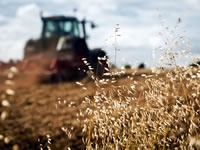Research which is helping to reduce greenhouse gas emissions from agriculture

Professor Pete Smith, Professor of Soils & Global Change at the University of Aberdeen conducted research that underpins international climate policy choices to reduce greenhouse gas emissions from agriculture. He produced evidence for the Intergovernmental Panel on Climate Change on the consequences of climate change for land-use and agriculture. Prof Smith, Dr Jon Hillier and their team developed the Cool Farm Tool - a greenhouse gas accounting software tool.
A consortium of the world's leading agri-food companies (including Unilever, Pepsi Co, Tesco, Heineken, Heinz, McCain, Ben and Jerry's, Costco and Marks and Spencer) use the software in 40 countries around the world. These major companies control large parts of the global food industry chain and have ambitious remission reduction targets. The Cool Farm Tool helps them to assess greenhouse gas emissions and devise plans for Greenhouse gas emission reduction.
Find out more
Key publications
- Smith, P, Martino, D, Cai, Z, Gwary, D, Janzen, HH, Kumar, P, McCarl, B, Ogle, S, O'Mara, F, Rice, C, Scholes, RJ, Sirotenko, O, Howden, M, McAllister, T, Pan, G, Romanenkov, V, Schneider, U, Towprayoon, S, Wattenbach, M & Smith, JU. (2008). Greenhouse gas mitigation in agriculture. Phil. Trans. R. Soc. B. 363, 789-813.
- Smith, P, Martino, D, Cai, Z, Gwary, D, Janzen, HH, Kumar, P, McCarl, B, Ogle, S, O'Mara, F, Rice, C, Scholes, RJ, Sirotenko, O, Howden, M, McAllister, T, Pan, G, Romanenkov, V, Schneider, U & Towprayoon, S (2007). Policy and technological constraints to implementation of greenhouse gas mitigation options in agriculture.
- Smith, P, Martino, D, Cai, Z, Gwary, D, Janzen, HH, Kumar, P, McCarl, B, Ogle, S, O'Mara, F, Rice, C, Scholes, RJ, Sirotenko, O, Howden, M, McAllister, T, Pan, G, Romanenkov, V, Rose, S, Schneider, U & Towprayoon, S. (2007). Agriculture. Chapter 8 of Climate change 2007: Mitigation. Contribution of Working group III to the Fourth Assessment Report of the Intergovernmental Panel on Climate Change [B. Metz, O. R. Davidson, P. R. Bosch, R. Dave, L. A. Meyer (eds)], Cambridge University Press, Cambridge, United Kingdom and New York, NY, USA.
- Smith, JU, Smith, P, Wattenbach, M, Zaehle, S, Hiederer, R, Jones, RJA, Montanarella, L, Rounsevell, MDA, Reginster, I, Ewert, F. (2005). Projected changes in mineral soil carbon of European croplands and grasslands, 1990-2080. Global Change Biology 11, 2141-2152.
- Hiller, J.G., Walter, C., Malin, D., Garcia-Suarez, T., Mila-i-Canals,L. & Smith, P. 2011. A farm-focused calculator for emissions from crop and livestock production. Environmental Modelling and Software, 26, 1070-1078.
- Hillier, J, Brentrup, F, Wattenbach, M, Walter, C, Garcia-Suarez, T, Mila-i-Canals, L, & Smith, P (2012). Which cropland greenhouse gas mitigation options give the greatest benefits in different world regions? Climate and soil specific predictions from integrated empirical models. Global Change Biology, 18(6) 1880-1894.
